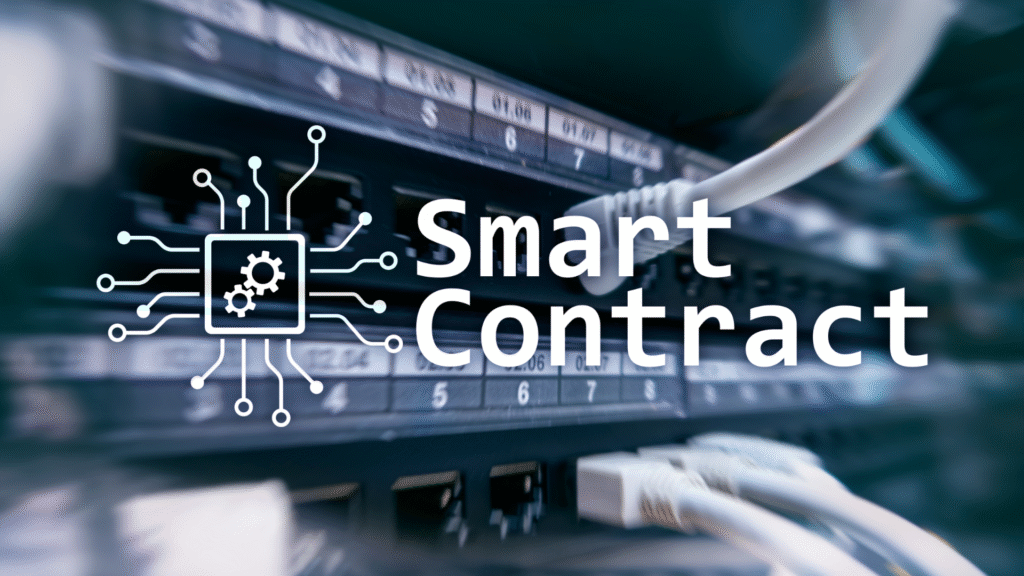Blockchain technology has gone far beyond its association with cryptocurrencies like Bitcoin and Ethereum. Today, it has emerged as a revolutionary framework for industries seeking secure, transparent, and efficient ways to conduct transactions. At the very core of this revolution lies Smart Contracts, which are reshaping how businesses, governments, and individuals manage trust and enforce agreements in the digital age.
These automated digital contracts are designed to function without intermediaries, enabling organizations to streamline processes, reduce costs, and increase confidence in digital interactions. By combining transparency, security, and efficiency, they represent one of the most powerful innovations within the blockchain ecosystem.
Understanding Smart Contracts
To fully appreciate their value, it’s important to first understand what smart contracts are and how they differ from traditional contracts. Traditional contracts rely on lawyers, brokers, or mediators to ensure that both parties follow through on their obligations. This often involves paperwork, legal processes, and delays. In contrast, smart contracts are agreements written directly into computer code that automatically execute once the agreed-upon conditions are met. They follow a simple but powerful “if/then” logic—for instance: If payment is received, then transfer ownership of the digital asset.
The beauty of these contracts lies in their self-executing nature. Because they are stored and executed on decentralized blockchains, no party can alter or manipulate them after deployment. This immutability makes them highly reliable and secure. Smart contracts also reduce human error, as the terms are executed exactly as coded. Instead of depending on trust in a middleman, both parties can rely on the trust built into the blockchain itself.
How Smart Contracts Work
While the concept might sound complex, the actual mechanism behind smart contracts is surprisingly straightforward. Developers begin by translating legal or business terms into computer code. This code forms the foundation of the contract, outlining the precise conditions that must be met for execution. Programming languages such as Solidity, used for Ethereum, or Rust, used for Solana, allow developers to build agreements that reflect real-world transactions in digital form.
Once the contract is written, it enters the deployment phase. Here, the coded agreement is uploaded to a blockchain network. Deployment makes the contract immutable, meaning it cannot be altered or deleted after being published. At this point, it becomes accessible to all relevant participants in the blockchain system, ensuring transparency and preventing unauthorized modifications.
After deployment, the contract moves to the execution stage. This is where the automation begins to shine. The contract continuously monitors for the fulfillment of its programmed conditions. For example, once a buyer transfers payment for a product, the smart contract automatically releases ownership rights to the buyer. This eliminates the need for third-party approval and ensures that the outcome is both immediate and fair.
Every action within the smart contract is then subject to verification. Blockchain nodes, which serve as independent validators, confirm that the required conditions have been met. This verification process ensures accuracy, prevents double-spending, and rules out fraudulent activity. Since nodes must reach consensus, the integrity of the transaction remains unquestionable.
Finally, the process concludes with finalization. At this stage, the blockchain permanently records the outcome of the contract. This record cannot be erased or altered, providing a tamper-proof audit trail for all parties involved. Whether it’s a property transfer, a financial settlement, or a supply chain update, the record stands as an immutable piece of evidence, reinforcing trust in the system.
By combining these stages—translation, deployment, execution, verification, and finalization—smart contracts eliminate uncertainty and subjectivity. The system ensures that agreements execute exactly as intended, without delays, disputes, or the influence of human error. This precision is what makes them one of the most transformative tools within blockchain innovation.
Benefits and Challenges
| Benefits | Challenges |
| Automation and Efficiency – Contracts execute automatically, removing delays and manual oversight. | Coding Complexity – Small errors in code can create vulnerabilities or failures. |
| Cost Reduction – Eliminates intermediaries like banks or brokers, reducing transaction costs. | Legal Recognition – Many jurisdictions do not yet recognize them as legally binding. |
| Trust and Transparency – Immutable and visible to all parties, reducing disputes. | Scalability Issues – Popular blockchains often face congestion, slowing execution. |
| Security – Tamper-proof records secured by blockchain and cryptography. | Security Risks – Bugs in code can be exploited by hackers. |
| Accuracy and Clarity – Contracts execute exactly as coded, leaving no room for misinterpretation. | Regulatory Concerns – Governments struggle to regulate blockchain without limiting innovation. |
Key Use Cases
The financial sector uses smart contracts to automate processes like loan approvals, settlements, and insurance claims. Banks and fintech companies save time by letting contracts release payments or approvals automatically once the required conditions are met. Cross-border transactions also become faster, eliminating delays caused by traditional banking systems.
Supply chain management benefits from greater transparency and traceability. Businesses track products at every stage—from manufacturing to final delivery—by linking data directly to the blockchain. This visibility helps reduce fraud, identify counterfeit goods, and assure customers of product authenticity.
In real estate, smart contracts streamline property transactions that are usually burdened with paperwork and intermediaries. Buyers and sellers finalize deals quickly through automated transfers, escrow services, and instant ownership updates. This not only cuts costs but also reduces the risk of fraud.
Healthcare providers use smart contracts to secure patient records and manage data-sharing permissions. Patients can grant or revoke access to their medical information with confidence. Insurance claims and billing processes also become more efficient, with payments released once conditions are validated.
Governments adopt smart contracts to deliver transparent and accountable services. Land registration becomes tamper-proof, welfare programs distribute funds fairly, and voting systems gain integrity through automation. These applications reduce bureaucracy and enhance public trust in government systems.
Together, these examples show how industries integrate smart contracts to improve efficiency, strengthen trust, and create secure digital systems.
The Future of Smart Contracts
Looking ahead, the role of smart contracts will only expand. With the integration of artificial intelligence, these contracts could evolve into even more advanced systems capable of analyzing data, predicting risks, and making autonomous decisions. Imagine a financial contract that not only executes based on payment conditions but also adjusts interest rates based on real-time economic indicators.
Another promising trend is interoperability. As different blockchain networks become interconnected, smart contracts will work seamlessly across platforms, enhancing global trade and collaboration. Governments are also expected to play a crucial role by creating legal frameworks that recognize and enforce digital contracts, giving businesses greater confidence to adopt them.
Ultimately, smart contracts represent a foundation for digital economies. As industries continue to innovate and global adoption increases, they will reshape business practices, improve accountability, and enable systems where trust is embedded directly into technology.
Smart contracts stand at the forefront of blockchain innovation, serving as the backbone of automation, trust, and digital efficiency. By eliminating intermediaries, reducing costs, and providing transparency, they transform how agreements are formed and enforced. While challenges related to coding, regulation, and scalability remain, ongoing advancements suggest these obstacles will be overcome. The world is steadily moving toward an era where smart contracts become a standard tool, powering secure, reliable, and transparent interactions across industries.
Frequently Asked Questions (FAQs)
1. What are smart contracts in simple terms?
A. Smart contracts are digital agreements coded on blockchain systems that automatically execute once specific conditions are met, without the need for intermediaries.
2. Are smart contracts legally recognized?
A. Legal recognition varies by country. While some regions have begun accepting them as legally binding, many jurisdictions are still developing frameworks to regulate their use.
3. Can smart contracts be hacked?
A. The blockchain itself is secure, but vulnerabilities in poorly written code can be exploited by hackers. Regular audits and careful programming are necessary to minimize risks.
4. Which industries benefit most from smart contracts?
A. Industries such as finance, real estate, healthcare, supply chain management, and government services are among the biggest beneficiaries of smart contract applications.
5. What is the future of smart contracts?
A. The future involves deeper integration with artificial intelligence, interoperability across blockchains, and broader legal acceptance, making them a standard tool for managing digital agreements.




Pingback: The Role of Oracles in Smart Contracts and DeFi - Your Partner in Tech Evolution
Pingback: Blockchain and Intellectual Property: Protecting Digital Rights - Your Partner in Tech Evolution